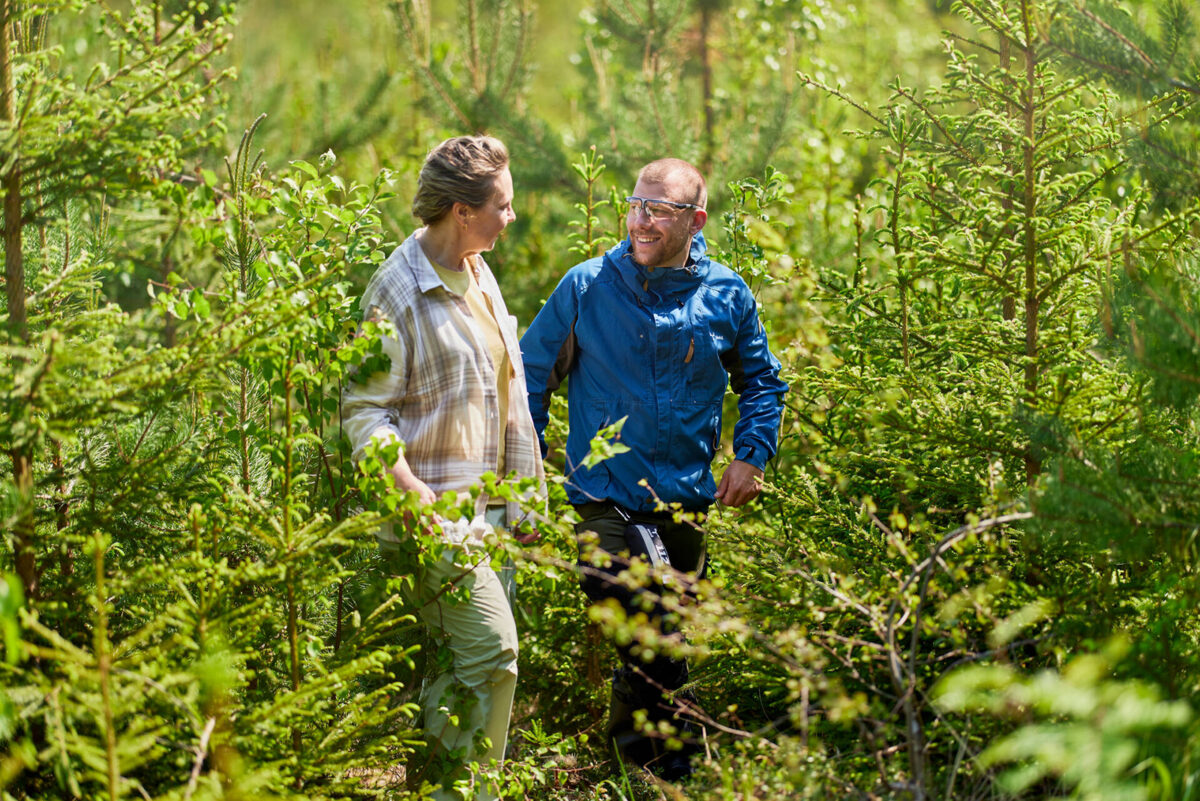Opinion: Mixed forests help diversify risk

Climate change is thus taking place not far out in the future, but in the here and now. A concrete example of this is the increase of forest damage. The choices we make now as regards tree species will affect the kind of forests we will have in the changed climate of the future.
2024 was globally the warmest year in recording history. The previous record temperature was measured in 2023. In Finland, the mean temperature has risen up to twice as fast as in other parts of the world. In Finnish Lapland, the summer of 2024 was the warmest in 2,000 years, as shown indirectly by observations on the growth rings of trees.
Most seedlings delivered for planting in Finland in the 1980s were pine. Spruce as a cultivated species became dominant towards he beginning of the 2000s. The trend was accelerated by the damage to pine stands caused by elk, as well as the availability of high-quality container seedlings of spruce. These start growing immediately rather than taking several years to start, in the way of the bare-root seedlings available until then
Now, however, the popularity of spruce has peaked, and cultivated forests are becoming more diversified. A likely reason for this is the extensive bark beetle damage in Central Europe, causing Finnish forest owners to consider the advisability of creating stands consisting of spruce alone. When setting up a forest, the fertility of the growing site should always be taken into account. Compared to other domestic tree species in Finland, the roots of spruce grow closer to the surface, which is why spruce is anticipated to suffer most from drought as temperatures rise.
This increases the importance of the basic rule: choose the appropriate species for each growing site.
Stands consisting of only one species are more vulnerable to damage. Forests should therefore be made more resistant to damage and helped to adapt to the changing climate by creating mixed stands. About one third of Finnish forests are mixed ones, in other words, forests where the maximum share of the dominant species is 75%. Mixed stands are more common in forests ripe for regeneration and less so in younger ones. This is because until quite recently, all broad-leaved trees were removed from young stands.

Mixed-species cultivation, such as creating stands with both pine and spruce, is a good method of distributing the increased risks due to climate change. Mixed-species cultivation reduces the risks caused by more severe droughts to spruce in particular. On the other hand, as regards damage by elk, spruces increase the density of stands, which is advantageous to pine. The stems of pines in dense stands are generally straighter and have fewer branches, yielding higher-quality timber. One-species stands can also be diversified during tending operations, by sparing the broadleaves that always spring up spontaneously in Finnish forests.
Mixed stands improve forest biodiversity and resistance to damage in the changing climate, and they help safeguard timber production even in the future. Purely from the perspective of short-term financial gain, spruce-only stands are likely to be the best option. However, a mix of species will reduce the vulnerability of spruce-only stands. Therefore, mixed forests are an excellent method of risk distribution!
Wishing to keep up with the times, I asked AI for help in rounding off this blog. I received this very fitting conclusion: ’Mixed forests are much more than a collection of trees. They are vitally important ecosystems, offering numerous benefits to the environment and to humans. Let us take care of mixed forests to ensure that we can enjoy their benefits now and in the future.’